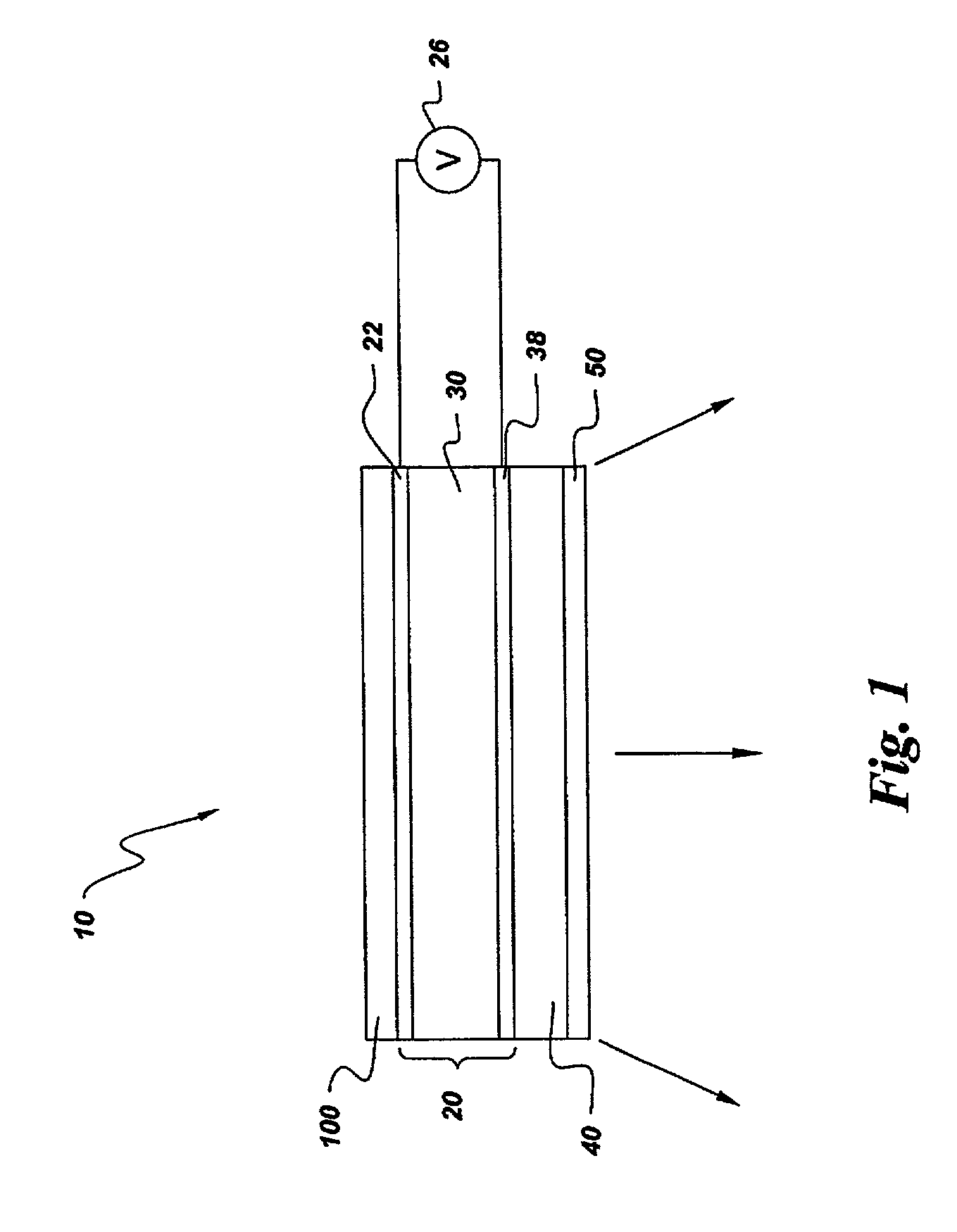Light-emitting device with organic electroluminescent material and photoluminescent materials
a light-emitting device and electroluminescent material technology, applied in the direction of discharge tube luminescnet screens, discharge tube/lamp details, electric discharge lamps, etc., can solve the problems of complex manufacturing of such micro-devices, low brightness, and high activation voltage of organic el devices, so as to achieve the effect of increasing the degree of control over the total amount of light scattering
- Summary
- Abstract
- Description
- Claims
- Application Information
AI Technical Summary
Benefits of technology
Problems solved by technology
Method used
Image
Examples
Embodiment Construction
[0057] A light-emitting device of the present invention was constructed on a glass substrate having a dimension of about 5 cm.times.5 cm. It is understood that devices having larger areas may be made according the method disclosed herein. Soda lime glass substrates with a transparent, low resitivity (15 Ohms / square) ITO film on one side were obtained from Applied Films Corporation. The ITO was then patterned by use of standard photolithography techniques. Following a solvent clean and oxygen plasma treatment, a thin (60 nm) film of poly(3,4)-ethylenedioxythiophene / polyst-yrene sulfonate ("PEDOT / PSS") polymer was immediately deposited atop the ITO via spin casting. The PEDOT / PSS solution was obtained from Bayer AG of Germany under the name of Baytron P, and was used as received. The resulting film was baked under a nitrogen atmosphere for one hour at 200.degree. C. A blue light-emitting organic EL material obtained from Cambridge Display Technologies (Cambridge, England) was deposite...
PUM
 Login to View More
Login to View More Abstract
Description
Claims
Application Information
 Login to View More
Login to View More - R&D
- Intellectual Property
- Life Sciences
- Materials
- Tech Scout
- Unparalleled Data Quality
- Higher Quality Content
- 60% Fewer Hallucinations
Browse by: Latest US Patents, China's latest patents, Technical Efficacy Thesaurus, Application Domain, Technology Topic, Popular Technical Reports.
© 2025 PatSnap. All rights reserved.Legal|Privacy policy|Modern Slavery Act Transparency Statement|Sitemap|About US| Contact US: help@patsnap.com



